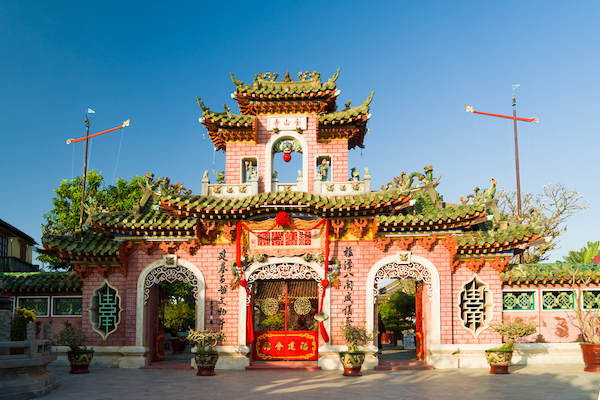Assembly Hall Of Fujian: Preserving History and Cultural Heritage in Hoi An, Vietnam
The Assembly Hall of Fujian, also known as Phuc Kien Assembly Hall, is a prominent historical and cultural landmark located in the charming town of Hoi An, Vietnam. This architectural masterpiece serves as a testament to the rich history and cultural heritage of the Fujian community in Hoi An. Let’s delve into the captivating history and significance of the Assembly Hall of Fujian.
History:
The Assembly Hall of Fujian was built in the late 17th century by Chinese merchants from the Fujian province who settled in Hoi An. These merchants formed a close-knit community and constructed the hall to serve as a gathering place for Fujian people in the area. The hall was not only a place of worship but also a center for social and cultural activities.
Cultural Heritage:
The Assembly Hall of Fujian showcases a unique blend of Chinese and Vietnamese architectural styles, reflecting the influence of the Fujian community’s heritage. The intricate designs, vibrant colors, and ornate details reflect the craftsmanship and artistic traditions of the time.
The hall is dedicated to Thien Hau, the goddess of the sea and protector of sailors, which is a significant deity in the Fujian culture. The vibrant interior of the hall features altars, statues, and elaborate carvings that depict scenes from Chinese mythology and folklore.

Significance:
The Assembly Hall of Fujian holds great cultural and religious significance for the Fujian community in Hoi An. It served as a place for the community to worship their deities, conduct ancestral rituals, and celebrate important festivals and events. The hall also played a crucial role in preserving the cultural identity of the Fujian people, providing a space for them to maintain their traditions and customs.
Must-See Features:
- Entrance Gate: The entrance gate to the Assembly Hall of Fujian is a beautifully crafted structure adorned with intricate carvings and vibrant colors. It serves as a grand entrance and sets the tone for the architectural beauty that awaits inside.
- Main Courtyard: Stepping into the main courtyard, visitors are greeted by a serene and peaceful atmosphere. The courtyard is adorned with sculptures, bonsai trees, and a pond, creating a harmonious space for reflection and contemplation.
- Altars and Statues: Explore the interior of the Assembly Hall, and you’ll find a series of altars dedicated to various deities, including Thien Hau, the goddess of the sea. The statues are intricately carved and adorned with gold leaf, showcasing the artistic prowess of the craftsmen of the time.
Visiting the Assembly Hall of Fujian:
The Assembly Hall of Fujian is open to the public, allowing visitors to appreciate its historical and cultural significance. As you explore the hall, it is important to be respectful of the sacred nature of the site and adhere to any rules or guidelines provided.
Visitors can learn more about the history and cultural significance of the Assembly Hall of Fujian by joining guided tours or utilizing audio guides. These resources provide valuable insights into the traditions, rituals, and symbolism associated with the hall.
Conclusion || Assembly Hall Of Fujian
In conclusion, the Assembly Hall of Fujian is a captivating cultural and historical site in Hoi An, Vietnam. It stands as a testament to the Fujian community’s history, traditions, and contributions to the cultural fabric of the region. A visit to this architectural marvel offers a fascinating glimpse into the intersection of Chinese and Vietnamese cultures, leaving visitors with a deeper appreciation for the rich heritage of Hoi An.
Book Your Flights : Here 30% OFF on Booking
Book Your Hotels : Here 20% OFF on Booking

0 Comment